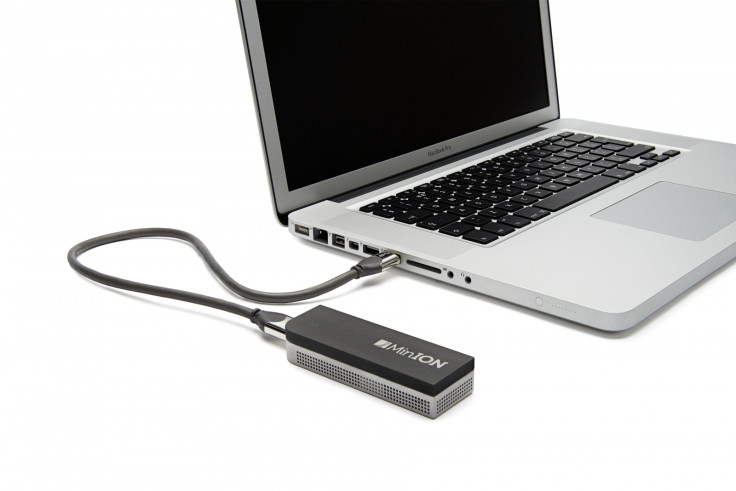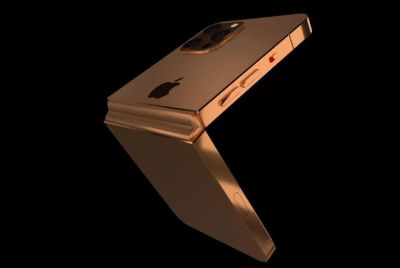MinION: $1,000 pocket-sized DNA sequencer successfully assembles living E.coli genome

Scientists from Canada and the UK have succeeded in sequencing and assembling the full genome of a living organism for the very first time on the MinION DNA sequencer, a device that is the size of a smartphone.
Bacteria genomes are much smaller and less complex than human genomes, but the successful demonstration proves that MinION could eventually be scaled up to sequence human DNA, which is pioneering considering how small the device is.
MinION is the brainchild of UK startup Oxford Nanopore Technologies. It measures just 4in long and is powered via USB cable by plugging it into a computer. The device is able to sequence all 80,000 base letters of a DNA strand and up to 150 million base pairs in less than six hours.
DNA sequencing today requires incredibly expensive state-of-the-art lab equipment and involves cutting up the genome and then mapping out where the pieces fit, which is very time-consuming and can take many days.
It only costs $1,000 to join the MinION Access Program, which gets you a the device with a starter kit containing three flow cells, two reagent kits, software and some "ongoing intermittent free supplies", according to the creators Oxford Nanopore.
Putting the most time-consuming task onto a tiny device
Reading all the base letters takes a long time and many such long reads are required, and at the moment, standard sequencing platforms can only read long stretches of a genome or generate data, whereas MinION is able to do both at the same time.
"Long reads are necessary to assemble the most repetitive parts of genomes but we need a lot of reads if we want to sequence human genomes. The small size of the MinION suggests there is room to scale up and sequence larger and more complex samples," said Dr. Jared Simpson, principal investigator at the Ontario Institute for Cancer Research and a lead author on the study.
"The amazing thing about this device is that it is many times smaller than a normal sequencer—you just attach it to a laptop using a USB cable.
"And while our work is a demonstration of the capabilities of the technology, the most significant advance is in the methods. We were able to mathematically model nanopore sequencing and develop ways to reconstruct complete genomes off this tiny sequencer."
The study, entitled "A complete bacterial genome assembled de novo using only nanopore sequencing data" is published in the journal Nature Methods.
Development on the device began in 2005 and the product was finally released in September 2014.
The only drawback of MinION is that its readings are not as accurate as reads provided by larger devices, and researchers previously reported a 60-80% accuracy rate. However researchers from the University of Birmingham and Ontario Institute for Cancer Research succeeded in developing methods to overcome the error rate, which led to an accurate final sequence.
Being able to spot viruses in samples much faster than before

The device can be used for everything from rapid pathogen sequencing to full length cDNA sequencing for isoform analysis. How long it takes depends on the application, but early access customers have reported that they have been able to detect pathogens much faster using the device than using conventional methods.
For example, researchers from University of California San Francisco published a report in June which showed that MinION was able to detect Ebola, Hepatitus C and the chikungunya virus from four human blood samples within four to 40 minutes of acquiring data.
The whole process from sample-to-answer took less than six hours to return a complete data analysis and interpretation of the samples.
"This technology will be particularly desirable for enabling point-of-care genomic analyses in the developing world, where critical resources, including reliable electric power, laboratory space, and computational server capacity, are often severely limited," the researchers wrote.
Another study published in May by the University of Queensland in Australia found that MinION could identify bacterial species and strains in less than an hour once the device started sequencing.
Furthermore, initial drug-resistance profiles were ready within two hours, with complete resistance profiles taking at most 12 hours.
The researchers concluded that MinION could become a useful clinical tool in detecting the best ways to treat patients with time-critical conditions like blood poisoning (sepsis) or detection of bacteria in the blood stream (bacteraemia).
© Copyright IBTimes 2025. All rights reserved.






















